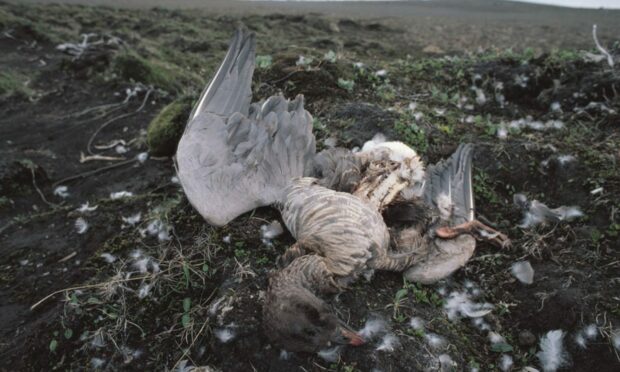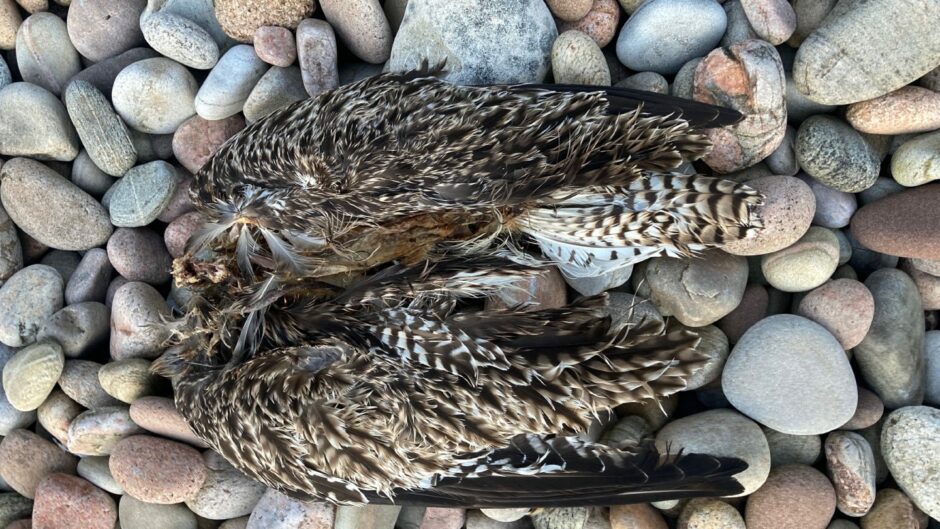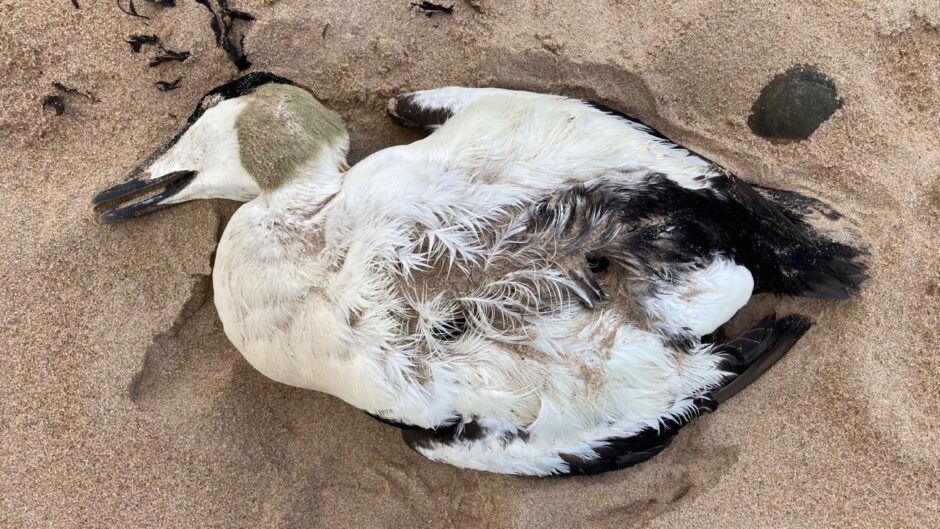Nature experts say they are battling one of the worst outbreaks of bird flu as containment measures are imposed on Shetland.
NatureScot has recorded large numbers of cases of avian influenza, commonly known as bird flu, in Shetland’s wild bird population.
Species including the great skua, which is also known by the name of bonxie, and gannets are among those at risk.
Scotland is home to more than half the world’s population of great skuas, with high numbers of birds in Shetland dying from the virus.
Speaking to Good Morning Scotland (GMS), Glen Tyler, policy and advice officer for NatureScot in Shetland said the “widespread outbreak” is by far the worst they have seen.
He said: “This is, as far as I am aware, by far the worst outbreak we have seen.
“Last year, we had a bit of a warning with bonxies particularly on Fair Isle and on St Kilda, being found sick and testing positive for highly pathogenic avian influenza (HPAI).
“This is a much more widespread outbreak and larger numbers in general.”
‘We can’t stop their movements’
Environmental health officers from Shetland Islands Council travelled to the island of Whalsay on Tuesday to impose a number of control measures following an outbreak.
A 1.9-mile protection zone and six-mile surveillance zone was placed around a poultry holding, to the south-west of the island, last weekend by the Animal and Plant Health Agency (APHA) after it became infected.
Social media posts have suggested further reports of wild birds affected in several locations.
Mr Tyler said containing the outbreak is proving difficult due to the inability control the movements of side birds.
“With domestic flocks you have a lot of control over the birds but with wild birds, we have very little control over what they do and where they go,” he added.
“The sea birds that are at the moment suffering here in Scotland are obviously inaccessible for the most part so we can’t get control of them really and we can’t stop their movements.
“We did have some early warnings of that because an outbreak confirmed as HPAI occurred in bonxie last summer.
“The other species, which wasn’t being affected last summer is gannet, and gannet is being affected quite strongly now. We are getting a few reports of other species but these are relatively small numbers.”
The outbreak is the latest in a chain of reports received across the north and north-east in recent months.
Egg and poultry producers in Aberdeenshire were left on red alert in March following a bird flu outbreak in a backyard flock near Collieston.
Outbreaks have also been reported on the Cromarty Firth and around the shorelines of Littleferry and Loch Fleet, just south of Golspie.


